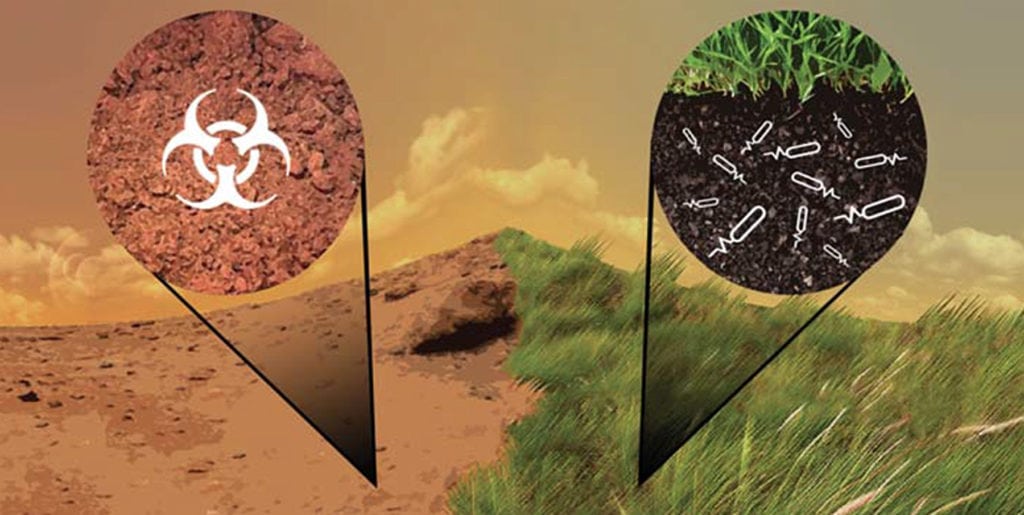NASA Invests in 22 Exploration Concepts

Concept of synthetic biology architecture to detoxify and enrich Mars soil for agriculture. Photo: NASA.
NASA is investing in 22 early-stage technology proposals that have the potential to transform future human and robotic exploration missions, introduce new exploration capabilities, and significantly improve current approaches to building and operating aerospace systems.
The 2017 NASA Innovative Advanced Concepts (NIAC) portfolio of Phase 1 concepts covers a range of innovations selected for their potential to revolutionize future space exploration. Phase 1 awards are valued at approximately $125,000, for nine months, to support initial definition and analysis of their concepts. If these basic feasibility studies are successful, awardees can apply for Phase 2 awards.
The selected 2017 Phase 1 proposals include: a synthetic biology architecture to detoxify and enrich Mars soil for agriculture; a gradient field imploding liner fusion propulsion system; solar surfing; and a direct probe of dark energy interactions with a solar system laboratory.
Phase 2 studies allow awardees time to refine their designs and explore aspects of implementing the new technology. This year’s Phase 2 portfolio addresses a range of leading-edge concepts, including: a Venus probe using in-situ power and propulsion to study the Venusian atmosphere, and novel orbital imaging data derived from stellar echo techniques — measurement of the variation in a star’s light caused by reflections off of distant worlds — to detect exoplanets.
Awards under Phase 2 of the NIAC program can be worth as much as $500,000 for two-year studies, and allow proposers to further develop Phase 1 concepts that successfully demonstrated initial feasibility and benefit.
All projects are still in the early stages of development, most requiring 10 or more years of concept maturation and technology development before use on a NASA mission.